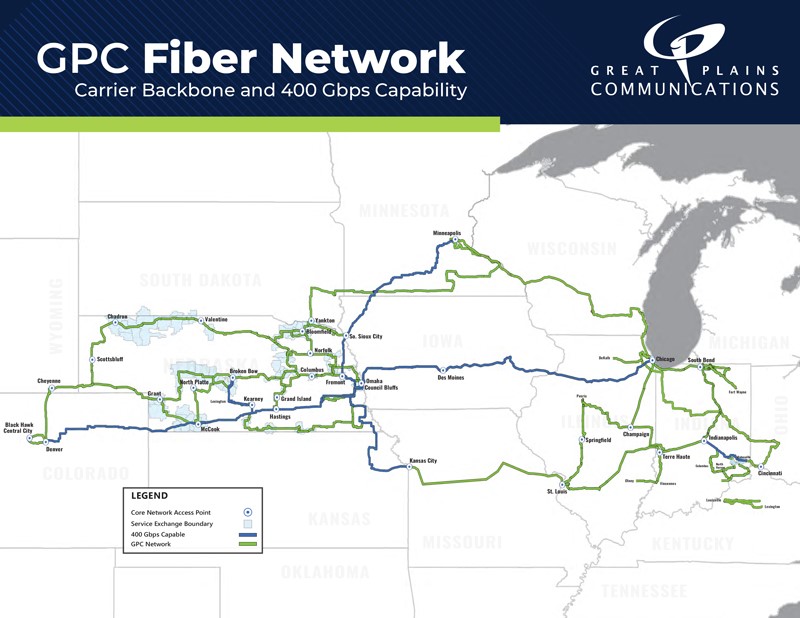Great Plains Communications, one of the largest privately-owned digital infrastructure providers in the Midwest, has upgraded its multistate, 18,000-plus mile network with Ciena’s Coherent Routing solution. With this network upgrade, Great Plains Communications is helping customers keep up with today’s ever-increasing bandwidth demands.
ChannelVision caught up with Great Plains Communications chief technology officer Tony Thakur to learn more about the project and how it benefits providers.
ChannelVision: Why do providers need access to a scalable 400G transport network?
Tony Thakur: From fiber to the home (FTTH) and small businesses, to large enterprise, wholesale, fiber to the tower (FTTT) and data centers, supporting the ongoing demand for higher speeds and more bandwidth is a must for providers.
The wholesale market for cellular backhaul is surging as 5G rollouts continue. 5G is a critical enabler for the future of wide-area wireless connectivity, both for users and for devices. Users are already demanding reliable high-speed mobile connectivity for all their work and leisure applications, and this will only expand as the range and scope of applications increase. The internet of things (IoT) is still in its infancy, but has the potential to grow much faster, much larger and with more varied connectivity requirements than the residential communication market.

Data center connectivity that can meet the rising bandwidth of hyperscalers, such as AWS, Microsoft Azure, Google Cloud, Apple and more is vital. Every day, users expect their data at their fingertips, along with high security and privacy, zero latency and higher capacity to upscale quickly as needs increase. Enterprise customers are increasingly shifting their applications to the cloud, which requires secure, high-speed, low-latency connectivity along with network visibility and control to optimize performance. In turn, cloud and global content providers need to get their applications and content closer to their respective business and residential users. This results in a need to source high-performance data center interconnect services at a regional level at the edge of the network.
And at the end of the line, the demands of residential customers are also increasing with the growth of streaming entertainment, online gaming, AR and AR applications and the shift towards work-from-home or hybrid working patterns. For these customers, competitively priced, reliable and high-performance connectivity is now an assumed commodity with the same criticality as water and energy supply. Local providers need access to high-capacity packet optical transport for the middle mile to support XGS-PON broadband rollout to their residential customers.
CV: How does the network upgrade help meet demand?
TT: Great Plains Communications takes pride in our progressive approach to accommodating the unique needs of all regional and national telecommunications carriers, LECs, ISPs, wireless carriers, enterprise, residential customers and other service providers. We knew a network upgrade that only provided a single increment in capability would not suffice. We needed to modernize the network to enable it to continue to scale in both reach and capability to meet future demands of all customers.
This is why we chose to deploy Ciena’s Coherent Routing solution and WaveLogic 5 Nano (WL5n) technology. It increases network capacity, reliability, and resiliency, and allows us to adapt to the continually increasing bandwidth needs of our customer base. The upgraded network also makes use of Ciena’s Navigator Multilayer Controller (NAV), which enables enhanced network control.
CV: What does this mean for providers?
TT: The Great Plains Communications MEF-certified 100-400G packet-optical connectivity ensures the capacity and resiliency needed to maximize connectivity opportunities. This includes the scalable 400G data center interconnect (DCI) services to support cloud providers and global content providers as they move applications and data closer to their end-users. It also provides the capacity and flexibility to maximize performance for FTTT customers.
The enhanced capability of this upgraded network provides a wider set of optical, Ethernet and IP services to customers while maintaining cost-efficient transport of legacy technologies where required. This includes enhanced capability for virtualization enabling rapid configuration with consequent reduced time to revenue.










